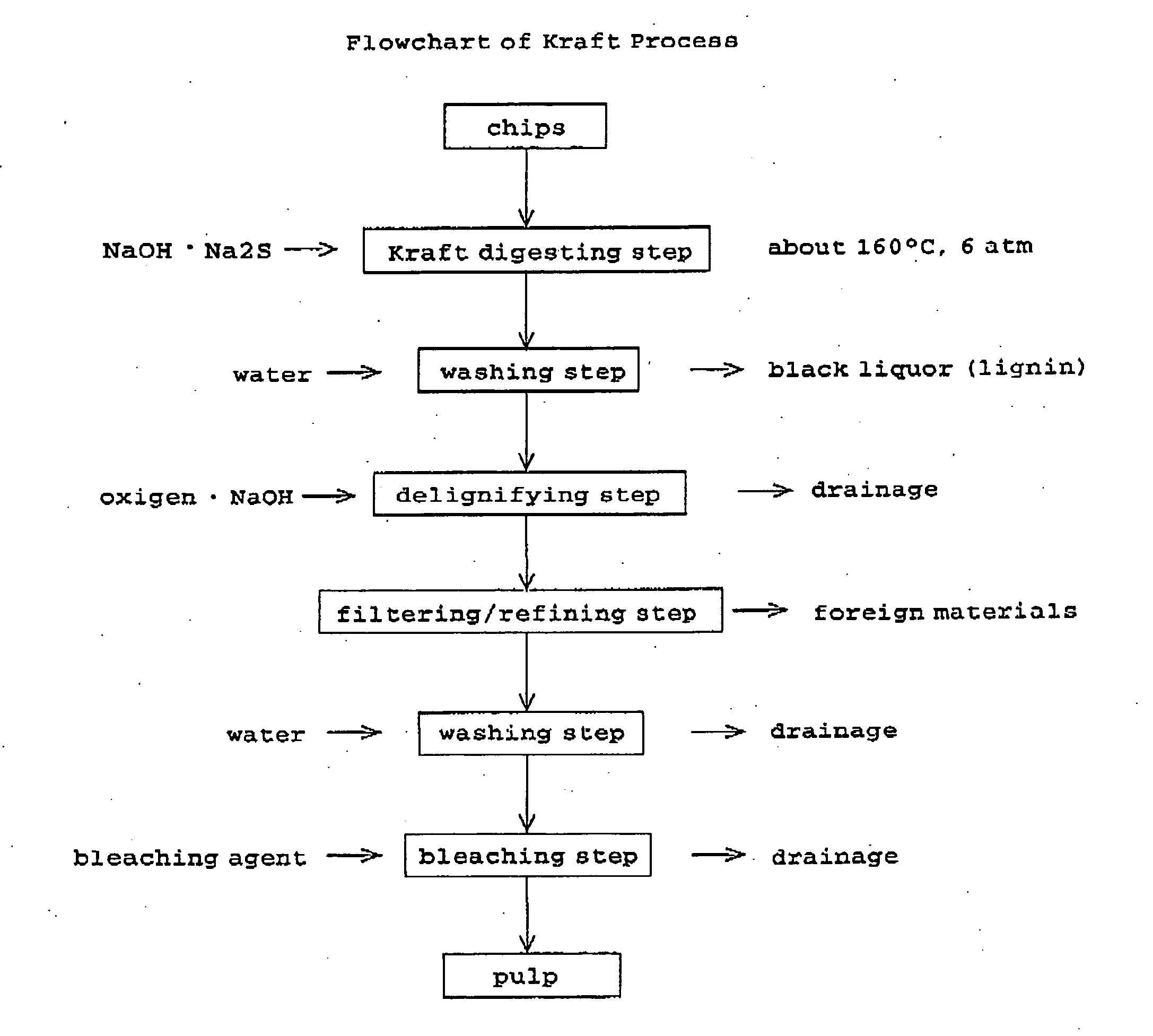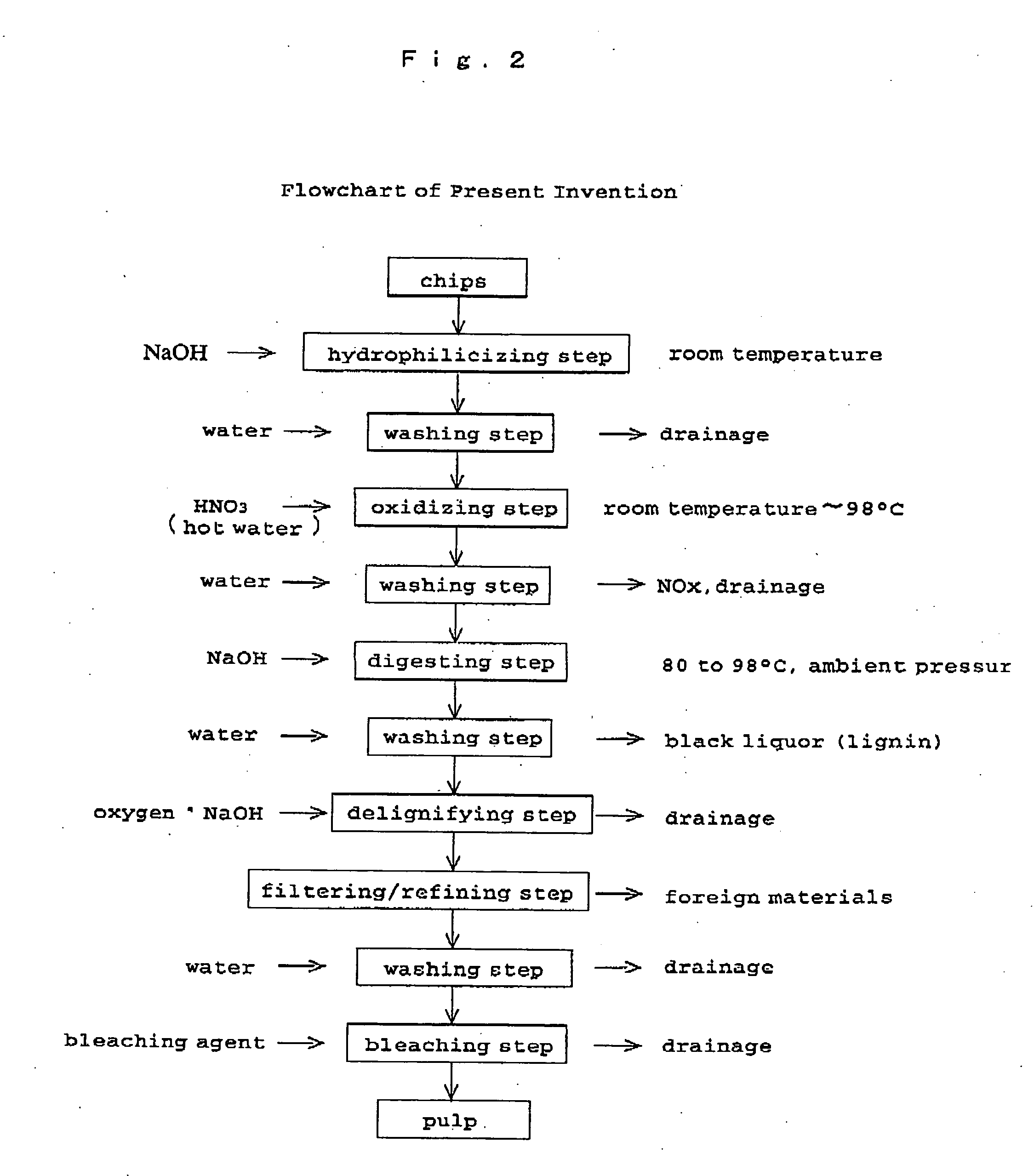Method for production of pulp
- Summary
- Abstract
- Description
- Claims
- Application Information
AI Technical Summary
Benefits of technology
Problems solved by technology
Method used
Image
Examples
example
[0083]While an example is described below, the present invention is by no means limited by the example.
[0084]The process of the example will be described below by referring to the flowchart of FIG. 3.
[0085]Lumber (veneer) was roughly crushed by means of a crushing machine (not shown) containing rotary claws and further crushed secondarily. Then, wood chips with a size not greater than 50 mm were sorted out from the crushed product. They were repeatedly subjected to a crushing / sorting operation until the obtained wood chips showed a size of 3 to 15 mm. In this way, desired wood chips were prepared.
[0086]In the hydrophilicizing step, the wood chips were immersed in a dilute caustic soda aqueous solution with a concentration of wt %. The solution temperature was held to the room temperature and the step was continued for 50 hours.
[0087]While inter-step Washing was required for the process that will be described below, the description thereof is omitted from the following description.
[0...
PUM
| Property | Measurement | Unit |
|---|---|---|
| Temperature | aaaaa | aaaaa |
| Temperature | aaaaa | aaaaa |
| Temperature | aaaaa | aaaaa |
Abstract
Description
Claims
Application Information
 Login to View More
Login to View More - R&D
- Intellectual Property
- Life Sciences
- Materials
- Tech Scout
- Unparalleled Data Quality
- Higher Quality Content
- 60% Fewer Hallucinations
Browse by: Latest US Patents, China's latest patents, Technical Efficacy Thesaurus, Application Domain, Technology Topic, Popular Technical Reports.
© 2025 PatSnap. All rights reserved.Legal|Privacy policy|Modern Slavery Act Transparency Statement|Sitemap|About US| Contact US: help@patsnap.com



